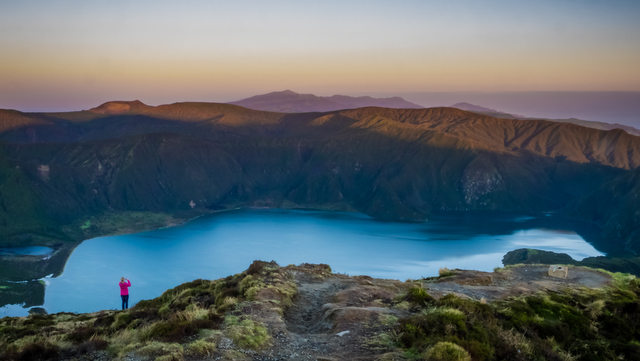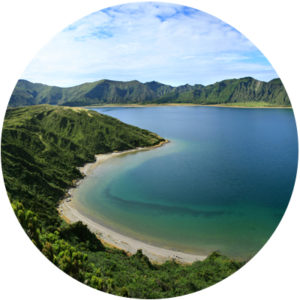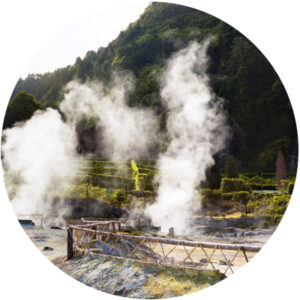
With vast calderas, mesmerising turquoise lakes and steam-emitting fumaroles, this remote archipelago has volcanic activity at its heart. These impressive islands offer up the ultimate adventure, tempting geographers to explore their geographical gems. Welcome to the Azores – the other Eden.
Our resident geographer and all-round adventurer – Cath Rule – gives us the run-down of what to expect from a discovery of the Azores. From what to see to when to visit, we’ve got you covered.
Human, physical & environmental geography
Often described as the ‘Hawaii of the mid-Atlantic’, the Azores isn’t short of spectacular geographical wonders! Whether it’s the lake-filled calderas, steaming fumaroles, hot springs or thermal pools, signs of the nine islands’ volcanic origins are all around. Don’t be fooled though, this archipelago’s diverse terrain is not all rocky and rugged, but instead unspoiled, lush green landscapes.
These beautiful islands provide opportunities to develop a deeper understanding of a range of human, physical and environmental geography. Tectonics and vulcanicity might dominate, but aspects of sustainability and conservation, unique ecosystems and issues associated with a growing tourist industry are also prevalent.
Sustainability
What makes the Azores all the more special is the low development level, with just 5% of the land being urbanised. Joining UNESCO’s Global Geopark Network, the Azores are continually working to improve sustainable development. In an effort to reduce carbon emissions, there’s been active investment in renewable energy, harnessing geothermal heat, hydroelectric power and wind.
Part of the Azores’ charm is that it remains relatively undiscovered by tourists. But the islands’ efforts to manage tourism sustainably haven’t gone unrecognised, as it was the world’s first destination to be awarded the Platinum Quality Coast Award for sustainable tourism.
Top visits
There’s so much to experience as part of your visit to the Azores, but to give some food for thought, these are our recommendations that you simply won’t want to miss!
Sete Cidades

With its circular rim and stunning lakes, this volcanic complex is one of Portugal’s 7 Natural Wonders. The town Sete Cidades sits on the caldera floor next to the lake and is the perfect place to explore on foot or by bike.
Lagoa do Fogo

The Agua de Pau stratovolcano consists of two calderas, one of which is filled with the Lagoa do Fogo. Enjoy impressive views of the lake and visit the natural monument of Caldeira Velha, full of fumaroles and hot springs.
Furnas Valley

The Furnas Valley, surrounded by towering hills and lush green vegetation, is set within the caldera of the Furnas volcano and experienced the largest explosive eruption of the Azores in 1630.
Curricular Links
With so much to experience, a geography trip to the Azores will help support and enhance what your young geographers have been taught back in the classroom. From plate tectonics and natural hazards to environmental challenges and ecosystems and biodiversity, any geographer will take away so much from a visit to these dramatic islands.
With 100% of our educational experiences tailored to complement your learning requirements, you can be confident that your students’ learning needs will be supported in line with the curriculum.
When to visit
With its temperate climate, the Azores welcomes visitors all year round! July and August are peak tourist season, so consider travelling outside of these months to avoid the crowds.
“The Azores could well be Europe’s best kept secret, offering spectacular scenery and inspiring geography. The combination of rich, green scenery, a warm climate and volcanic wonders makes this the perfect destination for an educational trip.”
Cath Rule, Geography Tours Development Manager at Rayburn Tours